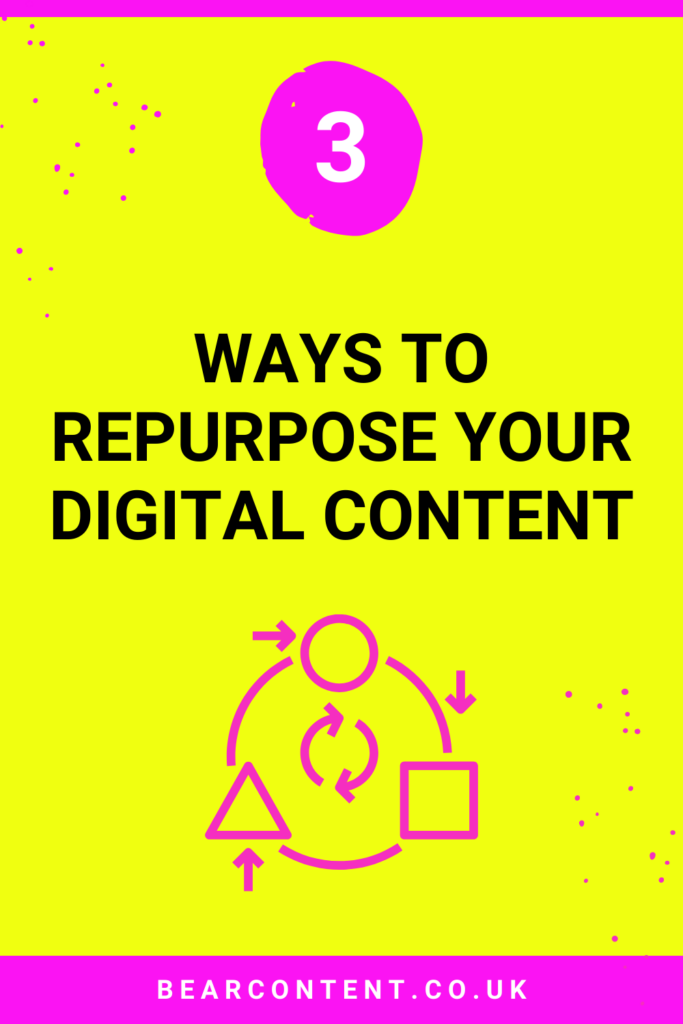 Content is a fundamental part of modern marketing.
Content is a fundamental part of modern marketing.
Creating compelling content is what we do here at Bear Content. Whether writing blog posts, producing podcasts or editing videos, the team lives and breathes content production.
Each time we create a piece of content for our clients, we’re conscious of the need to maximise its impact.
We know the Internet has an insatiable appetite for content.
You publish, your audience consumes and immediately wants more.
While you can spend your time and marketing budget creating fresh content to feed this hungry best, there is another option.
Content repurposing allows you to take existing content, use it in various ways, and then realise its maximum value.
Here are three ways to repurpose your existing content.
1 – Create micro-content
There’s a time and place for long-form content.
From an SEO perspective, it makes absolute sense to write 1,000 word or longer blog posts – as long as the entire word count is relevant.
We’ve experimented with longer videos and podcast episodes, and they usually outperform their shorter length alternatives.
But each piece of longer content is potentially a series of shorter or micro-content.
A study by Microsoft concluded that the average human attention span has fallen to just 8 seconds, shrinking by almost a quarter in a few years.
With shorter attention spans, creating and sharing bite-sized pieces of content, based on your original longer-form content, makes perfect sense.
A couple of our favourite ways to repurpose content in this way is to create graphic cards based on key quotes from a blog or interview and to turn existing video or audio (podcast) content into ‘videograms’ and ‘audiograms’.
2 – Make a video or podcast
If you have written a blog post or article, you have the basis for recording a video or podcast.
Content consumption preferences vary between different members of your audience.
While some people love to read, others prefer to watch, and some like to listen.
You can cater for these differing styles by turning blogs into videos and podcasts.
My top tip when doing this is to repurpose the original content genuinely, so you’re not reading the blog line-by-line into the camera or microphone.
A fun way to mix up the original content, and to create more engaging content, is to discuss the blog post with a colleague or subject matter expert.
And don’t forget, once you’ve created the repurposed content, to generate some micro-content based on the video or podcast episode!
3 – Collate a series
Once you’ve published a series of content pieces, you can collate them together to create some fresh content.
A series of blog posts covering the same topic or theme can be grouped to form an e-book or email series.
You might even turn a series into an e-learning course, charging for access to your knowledge and experience.
There’s no doubt that content marketing is a high-impact digital marketing tactic. But with the constant demand for fresh, original content and limited time or budget to produce it (not to mention the sheer volume of competition in your industry), you might be wondering where to start.
While you can spend hours creating new blog posts, white papers, e-books, webinars, videos and infographics from scratch – there’s another option: repurposing existing content!
How will you be repurposing your existing content?



